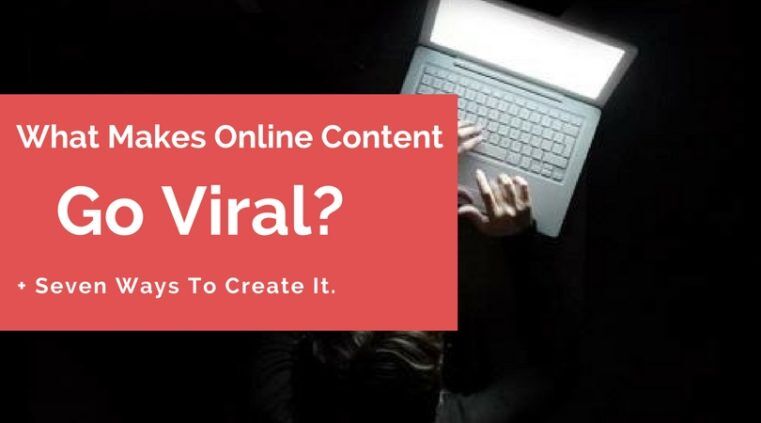
“Have you seen that cat video? It went viral!”
“Viral marketing is the next big thing.”
If you’ve been working in the digital landscape for any time at all, you’ve likely heard phrases like these. They appear when someone does something astonishing online, and it reaches millions as a result.
While it’s possible to go viral for everything from dance videos to marketing campaigns, there’s no question that virality is something most marketers strive for. Unfortunately, many aren’t sure how to achieve it. With this in mind, we’re going to break down viral content today, and help you understand what it is, how it happens, and how you can create it.
What Does “Going Viral” Mean?
Just like a virus spreads rapidly throughout the body, viral content spreads quickly across the web. According to Search Engine Watch, viral content tends to get its start in small networks like Vine or Snapchat. These platforms don’t typically use a person’s real name or identity and are comprised of small, tight-knit communities.
When a video or piece of content is posted there, participation is simple, and memes, videos, and challenges take off like wildfire. What’s more, since these initial ecosystems are small and concise, the content within them gains momentum rapidly. Once the content breaks out of said group, it’s well on its way to becoming mainstream.
Today, several prominent things are helping the rise of viral content. These include:
• Smartphones. With more than 68% of American adults owning smartphones, it’s never been easier to interact with content. All you need to do is skim through your news feed to find actionable examples of how this happens every single day.
• A focus on reader emotions. Content that triggers emotions such as awe or laughter tends to go viral more often (more on this in a moment) and content creators know this. As such, the amount of emotional content on the web has ballooned, and people are sharing it at higher rates than before.
• Causes have become popular online. Think of the ALS Ice Bucket Challenge. It’s the epitome of a viral content campaign, and it owes much of that success to the fact that it was a cause. What’s more, social media and smartphones made it easy for users to get on board; the emotional value of the CTA was often more than viewers could resist.
• Visuals help people communicate their values and emotions. Memes are one form of content that often goes viral, and for a good reason. While it takes some time and energy to type out a status update outlining a person’s current feelings, a meme can say it in an instant.
What Makes Online Content “Go Viral?”
Viral content isn’t a fluke nowadays. Instead, there are several common and well-known factors that make content go viral. Those are:
1. Lists
Lists are a sure-fire formula for viral content. Take BuzzFeed, for example, which dominated 2015 with a post called “21 Things You Know Only If You’ve Been Best Friends For 10 Years.” The post has more than 1.5 million shares on Facebook alone. Lists are fast and easy to skim, which makes them perfect for viral content.
2. Humor
According to a Marketo study, one of the most common reasons people share content is to amuse others. Entertaining content (like the grumpy cat meme) will typically perform better online.
3. Helpful Content
In addition to dominating the list sector, Buzzfeed is also a great place to look for short, digestible, valuable content. Articles like “22 Cleanses That Will Help You Start 2017 off Right” are helpful and relevant to users, so they’re more likely to go viral.
4. Image-Dense Content
Picture lists and image-dense material are visually appealing and ideal for sharing. As such, they go viral more often than text-dense content.
7 Ways to Create Viral Content
To create viral content in your business, follow these seven tips:
1. Target Emotions
Content that targets high-arousal emotions like awe and amusement performs better on the web. Leave your readers excited or inspired after reading your content.
2. Be Practical
If you’d like to go viral for the white paper rather than the dance video mentioned earlier, be practical. Include clear CTAs in your online content and educate your readers. This will earn you virality within your niche.
3. Make It Readable
While not everything you publish needs to be a list, it should all be easily readable. This means breaking your content up into short, logical headers and subheaders and ensuring that you use formatting elements like bolded text and bullet points to draw attention to relevant portions of your content.
4. Use Power Words To Your Advantage
Power words inspire action on the part of the reader. And this is exactly what you want if you’re trying to create viral content. For best results, use power words in your content’s title and introduction. This will help you hook the reader and keep them interested.
5. Make It Visual
Visual content is the name of the game in 2017, and it’s critical to share content your readers find visually appealing. Break it up with images, include videos, or share infographics for high-yield results.
6. Make It Credible
Content that is credible performs better online than content that isn’t. Even if it’s silly content you’re sharing, be sure to keep your language and grammar on-point, and build credibility through consistent branding and voice. If you’re citing sources and statistics, provide relevant links that help readers learn more on their own.
7. Share On Various Platforms
The more platforms your content reaches, the better. Share your would-be content on multiple social platforms to promote more sharing.
Viral Content Made Simple
Going viral is something most marketers want for their content, these seven simple tips can help you do it!
To learn more about viral content, or to partner with an agency that can help you create it, contact Thrive Internet Marketing today!
